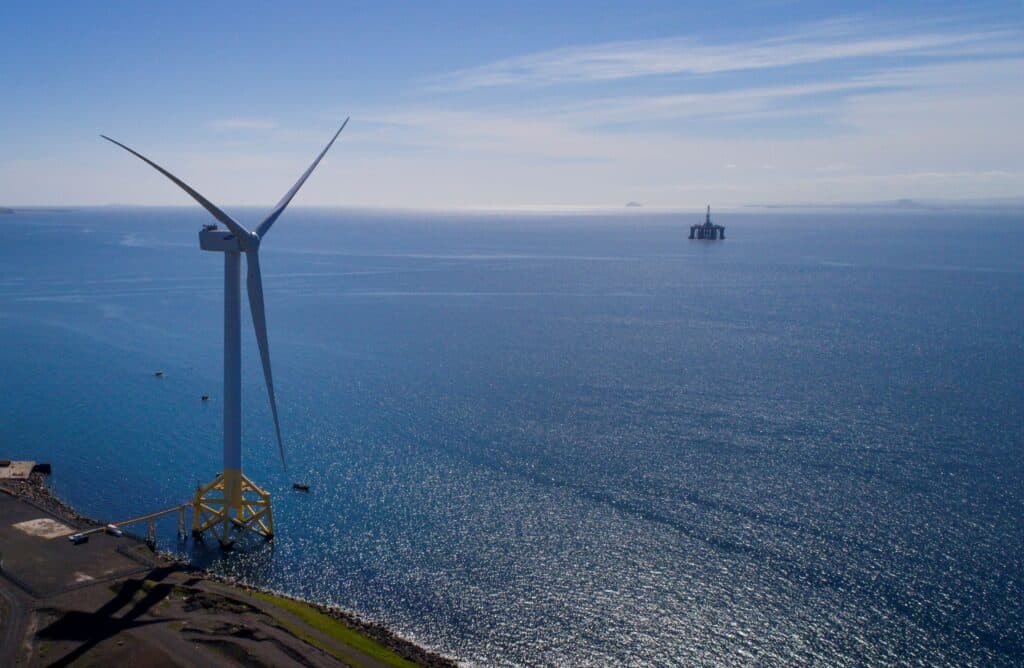The expansion of offshore wind has been a genuine UK success story. With over 2,500 turbines in the water already, supplying about 13% of the country’s power needs in 2023, the UK Government is targeting dramatically increased offshore wind deployment.
Such ambitious targets require radical new approaches to both maintaining existing windfarms and developing new ones. Business as usual simply isn’t going to cut it. In addition to big thinking on policy and regulation, highly innovative emerging technologies will be instrumental to hitting those targets as well as to the decarbonisation of our economy.
ORE Catapult teams are driving this transformation, actively engaging in a number of new programmes to establish how Artificial Intelligence (AI) and digital technology can revolutionise how we consent, progress, manage, and maintain our offshore wind sector and keep up the pace towards Net Zero.
Improving reliability, driving down risk and cost
At the heart of this work is the need to address two key factors, the need to maintain reliability for the existing fleet of offshore wind turbines, and unlocking how AI and digital technology can fast track the consenting of future wind farms. ORE Catapult believes that the adoption of new smart technology can reduce consenting times by as much as 40%.
What are the teams working on?
Component conditioning monitoring tools developed by our in-house research team use AI to analyse live operational SCADA (supervisory control and data acquisition) data. The tools are able to identify abnormal component behaviour and accurately predict impending faults on offshore wind turbine components several weeks before they occur, saving millions of pounds, and helping offshore wind farms operate at their full potential in generating clean power for the UK.
These tools are exceptionally straightforward to deploy, with no intrusive hardware installation requirements, no interruption to turbine operation, and no requirement for extraordinary bandwidth. Using the live SCADA data, they are able to issue regular health status reports and alerts to the operator that an impending component failure has been detected.
To help tackle delays in the consenting process, we are actively supporting the development of new smart sensing technologies for species and habitat monitoring that can enhance our understanding of the environmental effects of offshore renewables.
Cost savings in the millions
Our unique AI tools use existing operational data to accurately predict defection and future failures before they happen.
What we have developed is a suite of algorithms that, in real time, analyse operational SCADA data from a range of key wind turbine components and provide users with an indicator of a potential impending failure. For example, a tool designed specifically to monitor the health of wind turbine generators is able to detect impending failures with an accuracy of 80%.
The algorithm doesn’t make a decision regarding what to do with the indication – it provides our team and our clients with the information needed to make informed decisions and proactively plan maintenance activities. Many wind turbine components, and the vessels required to exchange them, have long lead times and therefore advance notice that a component is likely to fail allows for maintenance planning and resource allocation, significantly reducing turbine downtime.
Currently deployed on four operational offshore wind farms, our intelligent AI tools have actively demonstrated their potential to predict faults, on average, up to 30 days ahead of time.
This AI-driven predictive approach can save millions of pounds, and hundreds of work hours in repair, operations, and maintenance, over and above the carbon emission savings through reduced transport demands. Depending on size and generating capacity, as well as agreed pricing of the power it produces, just one turbine out of action for a single day can cost windfarm operators between £4,000-£15,000.
Although revenue saving is hugely important, there are also benefits to the UK supply chain. For example, companies who provide vessels and replacement parts can more effectively respond to need, and coordinate with wind farms operators.
Unique approach requiring no additional installation
These tools are unique in that they require no additional physical installation. They first study the data that wind farm operators already gather on a daily basis, then send email alerts outlining potential failures.
ORE Catapult teams take pride in our ‘independent, expert, trusted’ reputation and are acutely aware that wind farm operators trust us to manage their data securely, and ensure complete confidentiality. We already do this in a number of other ways, such as through our SPARTA programme. Our objective is therefore to open this toolkit out to the wider offshore wind sector, so that we can help to ensure the UK is maximising its potential for offshore wind.
